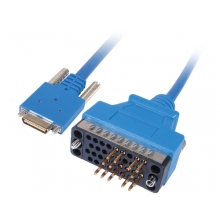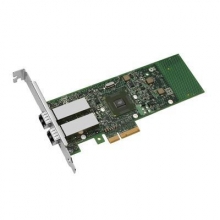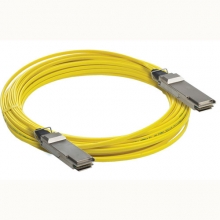- Optical Transceivers
- SFP+ Transceivers
- XENPAK Transceivers
- XFP Transceivers
- X2 Transceivers
- SFP Transceivers
- Compatible SFP
- 3Com SFP
- Alcatel-Lucent SFP
- Allied Telesis SFP
- Avaya SFP
- Brocade SFP
- Cisco SFP
- D-Link SFP
- Dell SFP
- Enterasys SFP
- Extreme SFP
- Force10 SFP
- Foundry SFP
- H3C SFP
- HP SFP
- Huawei SFP
- Intel SFP
- Juniper SFP
- Linksys SFP
- Marconi SFP
- McAfee SFP
- Netgear SFP
- Nortel SFP
- Planet SFP
- Q-logic SFP
- Redback SFP
- SMC SFP
- SUN SFP
- TRENDnet SFP
- ZYXEL SFP
- Other SFP
- FE SFP
- GE SFP
- OC3 SFP
- OC12 SFP
- OC48 SFP
- Copper SFP
- CWDM SFP
- DWDM SFP
- BIDI SFP
- Fiber Channel SFP
- Multi-Rate SFP
- SGMII SFP
- Compatible SFP
- GBIC Transceivers
- Passive Components
- Networking
- Cables
- Equipments
- Tools
- Special Offers


Multimode and Single-Mode: What’s the Difference?
The two fiber types get their names from the way they transmit light. Generally designed for systems of moderate to long distance (e.g., metro, access, and long-haul networks), single-mode fibers have a small core size (< 10 μm) that permits only one mode or ray of light to be transmitted. This tiny core requires precision alignment to inject light from the transceiver into the core, significantly driving up transceiver costs.
By comparison, multimode fibers have larger cores that guide many modes simultaneously. The larger core makes it much easier to capture light from a transceiver, allowing source costs to be kept down. Similarly, multimode connectors cost less than single-mode connectors due to the more stringent alignment requirements of single-mode fiber. Single-mode connections require more care and skill to terminate, which is why components are often pre-terminated at the factory. Multimode connections, on the other hand, can be easily performed in the field, offering installation flexibility, cost savings, and peace-of-mind.
Multimode fiber continues to be the most cost-effective choice for enterprise applications up to 550 meters.
Enterprise environments present particular network challenges, including limited spaces and tight bends, high connection density, and components that get handled frequently. Multimode fibers are ideally suited for these conditions. And since distances within a premises system rarely approach 550 meters, multimode fiber should be the choice for these applications.
Beyond 550 meters at 10 Gb/s (or 1 km at 1 Gb/s), it is necessary to utilize single-mode fiber. There are new choices for single-mode fiber today, so be sure to consider your options; a bend insensitive full spectrum singlemode fiber provides more transceiver options, more bandwidth, and is less sensitive to handling of the cables and patch cords than conventional single-mode fiber.
The network designer or end user who specifies multimode fiber for short reach systems still must choose from two types – 50 μm or 62.5 μm. 50 μm multimode fibers were first deployed in the 1970s for both short and long reach applications. 62.5 μm multimode fiber, introduced in 1985, supported campus applications up to 2 kilometers at 10 Mb/s. The mid- 1990s, with the introduction of the VCSEL laser light source, saw a shift back to 50 μm fiber. Today, 50 μm laser-optimized multimode (OM3) fiber offers significant bandwidth and reach advantages for most building applications, while preserving the low system cost advantages of 850 nm-based multi-mode fiber.
Since optoelectronics is a large percentage of the total system cost, the most economical solution for transmitting 10 Gb / s in the company to 50 OM3 fibers, which are designed or manufactured for use with low-cost VCSELs. This advantage has become reality at speeds higher, because the transceiver developed future should have to take advantage of 10Gb / s technology companies.
Looking to listen in the future, broadband Study Group (HSSG) of IEEE in November 2006 to support 100 Gb / s Ethernet that the next speed. In addition, the HSSG suggest that higher transmission rates with OM3 fiber arrays at low cost parallel optical transceiver, or a combination of optics and parallel multi-wavelength (CWDM Coarse Wavelength Division Multiplexing or support).
For example, the fibers are ten OM3 operating at 10 Gb / s can in a system of 100 Gb / s (10 x 10 array) activities. Or five OM3 fiber can transmit two wavelengths operating at 10 Gb / s (5 x 2 x 10 array).
For single-mode fiber is the HSSG recommend the use of optical CWDM or DWDM. In this case, multiple wavelengths, each operating at 10, 20 or 25 Gb / s, would be transferred by a single fiber. Why not single-mode fiber with a single laser (serial transfer) operating at 100 Gb / s? Such a laser is simply not available in stores and probably will not for long. It is very difficult to develop and produce such a laser at a low cost. Therefore achieve higher speeds on singlemode fiber or DWDM optical CWDM lasers require several more wavelengths Drive. But now that you use the transceiver and the connector can lead very direction challenges, the cost of these items when they face used with single mode fiber.
In general, then, continue to multimode fiber, the best choice for enterprise applications can be up to 550 meters. single-mode fiber is preferred for distances over 550 meters.
If the network transmission distances, the use of single mode optical fibers show consider the words of the recent “Bend-insensitive Zero Water Peak (Full Spectrum) fibers. These fibers are designed to provide long-term reliability in applications with tight turns and small parcels.



















































